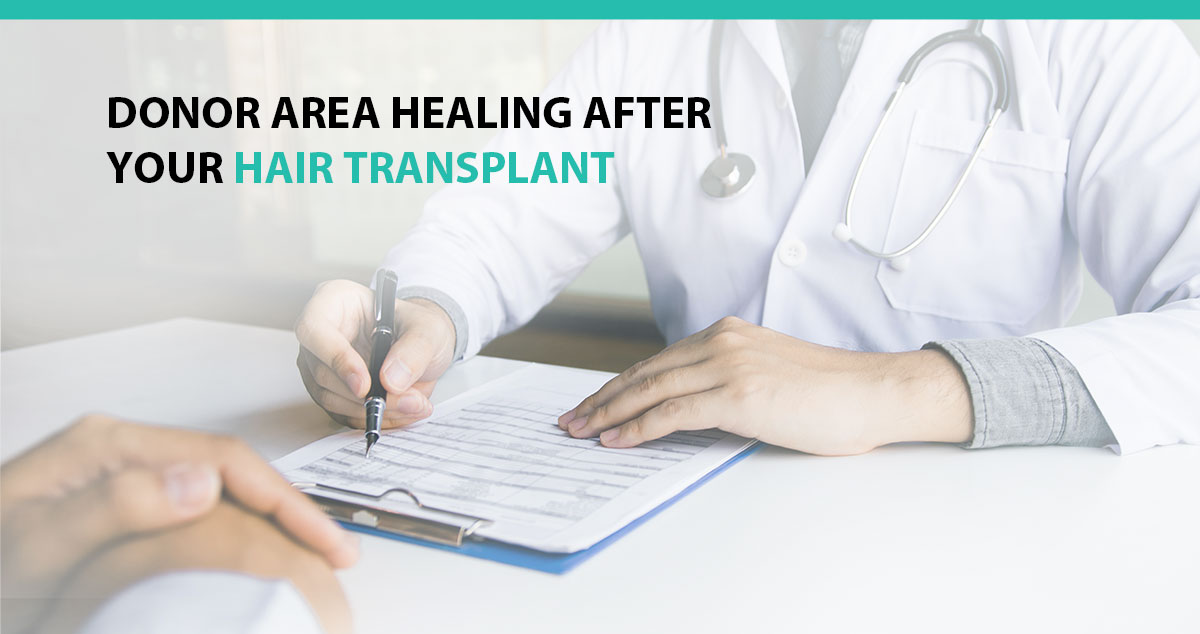
Hair transplant procedures involve harvesting hair follicles from a donor area and transplanting them to a recipient area that is bald or thinning. The donor area refers to the area of the scalp where the hair follicles are harvested from, usually the back of the head or the sides of the head.
Donor area healing is an important aspect of the hair transplant procedure, as it helps to determine the overall success of the transplant. Here are some items to consider regarding donor area healing after a hair transplant:
- Healing timeline: The healing timeline for the donor area can vary depending on the individual, the technique used, and the extent of the transplant. The donor area will begin to heal within a few days after the procedure and will continue to heal over the next few weeks. The majority of the healing process is complete by around two weeks post-surgery, but it can take up to a month or more for the donor area to fully heal. Many people choose to return to work as soon as a week later, as the natural hair growth around the donor area can cover up the small dots that were seen immediately after the procedure. Healing timelines vary, so your recovery time may be shorter or longer. Remember that patience will be your friend and will assist in your satisfaction.
- Side effects: As with any surgical procedure, there may be some side effects associated with donor area healing. These can include swelling, bruising, and discomfort. It is important to follow your team’s aftercare instructions to minimize these side effects and promote faster healing.
- Scarring: One of the primary concerns with donor area healing is scarring. There are two main techniques used for harvesting hair follicles – FUE (follicular unit extraction) and FUT (follicular unit transplantation). FUT involves removing a strip of scalp from the donor area, which can result in a linear scar. FUE involves removing individual hair follicles using a tiny punch tool, which results in tiny circular scars that are less noticeable. Proper aftercare can help minimize scarring in both cases.
- Hair regrowth: The good news is that the hair in the donor area will grow back over time, even after it has been harvested for transplantation. However, it is important to note that the density and thickness of the hair in the donor area may be reduced after a transplant, particularly with FUT. This is because a strip of scalp is removed, which can impact the surrounding hair follicles. With FUE, the impact on the surrounding hair is usually less noticeable.
- Care and maintenance: To promote faster healing and reduce scarring, it is important to take proper care of the donor area after a hair transplant. Your surgeon will provide you with specific aftercare instructions, but in general, you should avoid strenuous exercise, direct sunlight, and tight-fitting hats for several weeks after the procedure. You may also need to avoid certain hair care products and styling techniques that could damage the transplanted hair until advised it is safe to do so again. And if you smoke or drink, take time to ask your team if this needs to be deferred for a brief time.
- Manage pain and discomfort: It is normal to experience some pain and discomfort after a hair transplant, especially in the donor area. Your surgeon may prescribe pain medication or recommend over-the-counter pain relievers to help manage these symptoms. It is important to follow the recommended dosage and not to exceed the recommended amount of pain medication.
Donor area healing is an important aspect of the hair transplant process, as it can impact the overall outcome and satisfaction of the procedure. Proper aftercare and maintenance are key to minimizing scarring and promoting faster healing. It is important to work closely with your medical team and follow their instructions carefully to ensure the best possible results.
If you are interested in a hair restoration procedure, Dr. Joseph Williams is always available to take your questions and answer your concerns, set up a consultation today.










